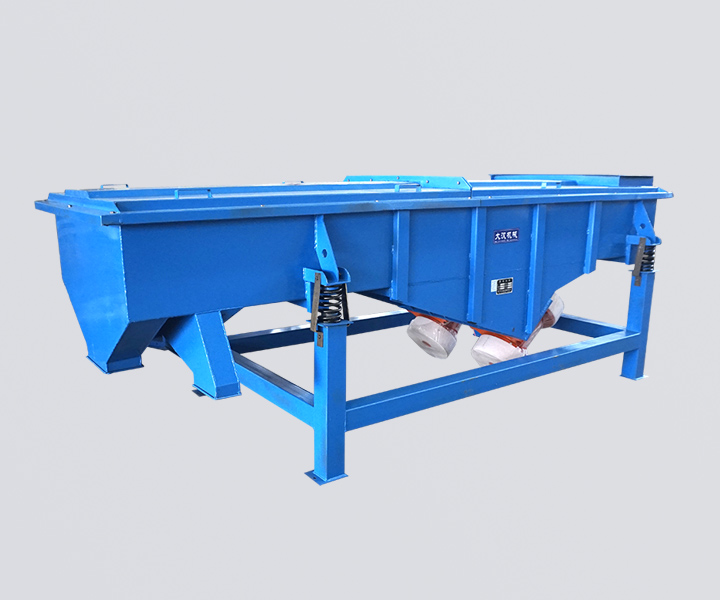 electric flour sifter
electric flour sifter commercial electric flour sifter
commercial electric flour sifter portable lectric flour sifter
portable lectric flour sifter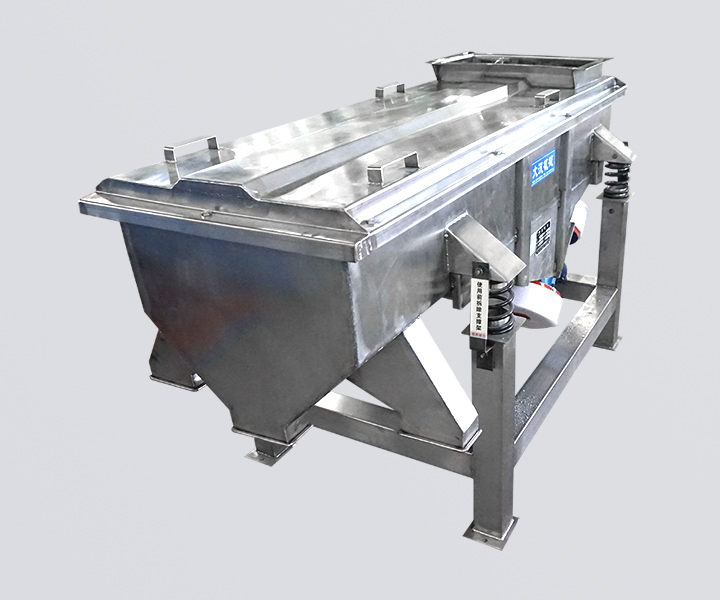 Mobile
Mobile electric flour sifter for flour
electric flour sifter for flour




For separating material by particle size, removing small amounts of oversized material from fine material
![]()
![]()
![]()
Price:$900.00-$6,500.00/Set
Consult now and enjoy a 10% discount
Feeding size:≤10mm Screen mesh: 5-400 mesh
Capacity: 0.12-20t/h Width: 500-1000mm
Length: 1500-4000mm Layer: 1-6 layers
Material: Carbon Steel/ Stainless Steel 304
Motor Power: 2*(0.4-3.7)kw
Application:

Vibrating screener is a machine that uses vibration to sieve materials of different particle sizes. It can divide particles into multiple size parts, remove oversized particles or foreign matter, remove fine powder from process flow, or separate excess liquid from finished products. Screens of different meshes can be used to screen materials of various particle sizes. In one operation, 7 kinds of products of different specifications can be graded at the same time. Citation can build up to 6 decks, which can be manufactured according to your needs and can be customized. structure and configuration.
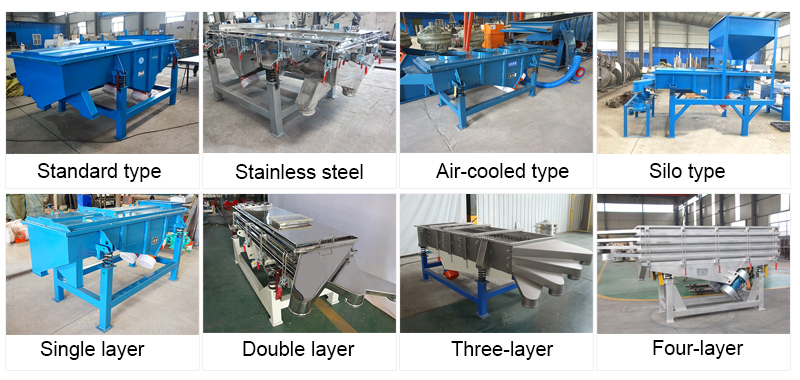
The primary function of a vibrating screener is to separate and classify particles of different sizes and shapes according to their specific properties. Vibrating screeners are used in a wide range of industries, including mining, pharmaceuticals, food and beverage, chemical processing, and construction, among others.

Some of the specific functions and applications of vibrating screeners include:
1. Particle separation: Used to separate particles of different sizes and shapes according to their specific properties. This can include separating solids from liquids, separating larger particles from smaller ones, and separating particles based on their density or shape.
2. Screening and grading: Used to screen and grade materials according to their size and shape. This can include grading materials into different size fractions or removing oversized or undersized particles.
3. Dewatering: Can be used for dewatering applications, such as removing excess water from a material stream.
4. Cleaning: For cleaning applications, such as removing debris or foreign objects from a material stream.
5. Sorting: For sorting applications, such as sorting materials based on their color, shape, or other specific properties.
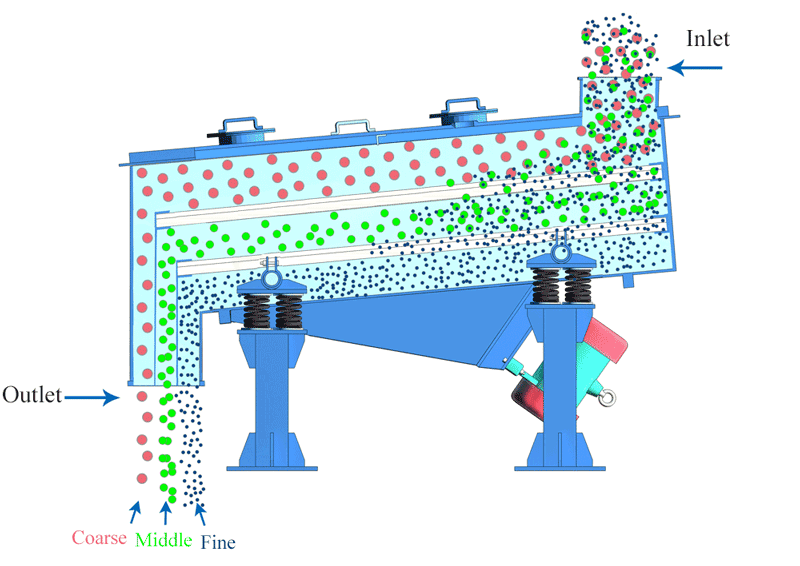
The Vibrating screener uses a vibration motor as the vibration source and is driven by dual vibration motors. When the two vibration motors are rotated synchronously and in reverse, the exciting force generated by the eccentric block of the vibration motor cancels each other in the direction parallel to the axis of the vibration motor. The direction perpendicular to the axis of the vibrating motor overlaps as a resultant force, so the running trajectory of the vibrating screen machine is a straight line, and the two motor shafts have an inclination angle relative to the screen surface. Throwing up and jumping forward to make a linear motion, through different levels of sieves to screen various specifications of the upper and lower sieves, and then discharged from different discharge ports, flowing into the silo or the material barrel, to achieve the goal of sifting the material. the purpose of sieving.
There are several types of vibrating screeners, each designed for specific applications and processing requirements. Some of the most common types of vibrating screeners include:
Air-cooled Vibrating Screenr
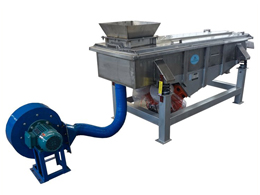
Based on the vibrating screen, a fan cooling system is added to cool down the high-temperature materials and continue to sieve. It is suitable for sieving fried food, high-temperature slag and other high-temperature products.
Multilayer Vibrating Screener

The vibrating screen has 6 layers of screens with different meshes, and the mixed materials are separated into finished products of different fineness according to the meshes of the screens.
Plastic Vibrating Screener
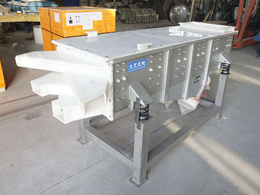
It is made of polypropylene PP, which is resistant to corrosion and oxidation. It is often used in the screening of chemical raw materials to ensure that the materials are not easy to deteriorate.
Big screen area
Screening areas with a width of 500 mm to 1500 mm and a length of 1,500 to 4,000 mm allow a processing capacity of up to 20 t/h and can be customized according to customer requirements.
Identify particles down to 0.4 mm
Mesh sizes range from 3/8" (10 mm) to 400 mesh (38 microns) to improve quality by removing oversized or undersized particles as well as foreign matter and debris.
7 levels of separation
Particles of different sizes and shapes can be separated in one operation, and products of up to 7 different specifications can be classified.
Low noise level
Produces less noise than other types of screening equipment, making it more suitable for use in noise-sensitive environments.

| Model | Layer | Screening Area (mm) |
Mesh Size (mesh) |
Particle Size (mm) |
Capacity (t/h) |
Power (kw) |
Vibration Direction Angle (°) |
Screen Inclination (°) |
Dual Amplitude |
| DZSF-520 | 1-6 layers | 500*2000 | 2-400 | 0.074-10 | ≤3 | 0.37×2 | 45-60 | 0-7 | 3-4.5 |
| DZSF-525 | 500*2500 | ≤5 | 0.37×2 | ||||||
| DZSF-612 | 600*1200 | ≤8 | 0.37×2 | ||||||
| DZSF-1020 | 1000*2000 | ≤12 | 0.75×2 | ||||||
| DZSF-1025 | 1000*2500 | ≤16 | 0.75×2 | ||||||
| DZSF-1030 | 1000*3000 | ≤20 | 1.1×2 | ||||||
| DZSF-1224 | 1200*2400 | ≤23 | 1.5×2 | ||||||
| DZSF-1525 | 1500*2500 | ≤28 | 1.5×2 | ||||||
| DZSF-1530 | 1500*3000 | ≤32 | 2.2×2 |
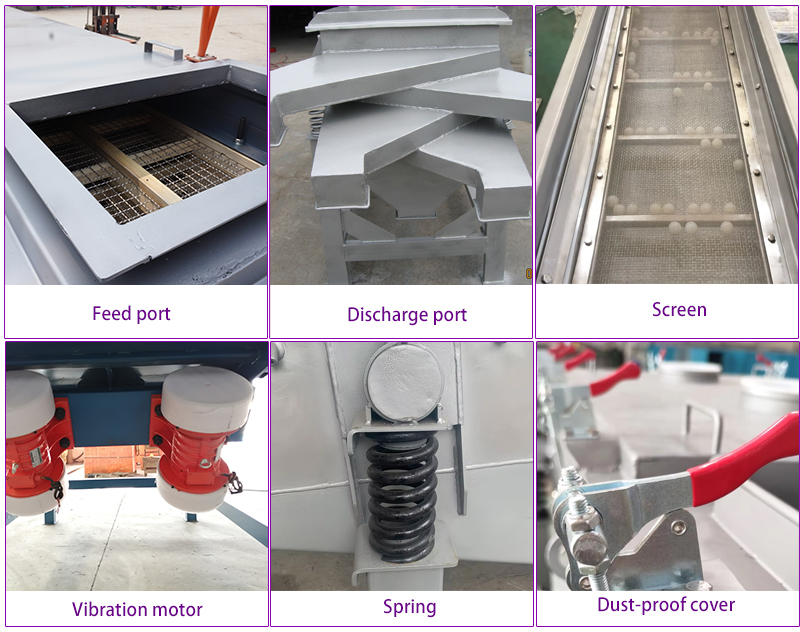
Feed port: A distributor is added at the feed inlet to ensure that the material can be evenly distributed on the entire screen surface.
Discharge port: The opening direction and material, either carbon steel or 304/316 stainless steel, can be customized as needed.
Screen: The screen mesh is made of high quality 304 stainless steel, screening size can be customized according to customer requirements.
Vibration motor: High quality Italian Oli motor, more durable.
Spring: Adopt high quality domestic famous brand spring.
Dust-proof cover: According to customer requirements, add dust-proof cover for the equipment, design observation hole, and the use of quick switch,convenient cleaning screen.
1. Provide different screen types according to your requirements

There are several types of screen options available for vibrating screeners, including wire mesh, perforated plates, and synthetic screens. The choice of screen type will depend on the specific application and the size and shape of the particles being screened.
2. Grid material

a.Carbon steel frame: Carbon steel is a commonly used material for vibrating screener frames due to its strength, durability, and low cost. Carbon steel frames are suitable for applications where the material being screened is not corrosive or abrasive.
b.Stainless steel frame: Stainless steel is a corrosion-resistant material that is commonly used for linear vibrating screen frames in applications where the material being screened is corrosive or abrasive, which are more expensive than carbon steel frames but offer greater durability and longevity.
c. Plastic frame: Plastic is a lightweight, corrosion-resistant material that is commonly used for weight and corrosion resistance are a concern.
3、Control system
The vibrating screener can be equipped with a range of control systems, including manual, semi-automatic, and fully automatic systems, depending on the specific processing requirements.
4、Feeding system

The vibrating screener can be equipped with a range of feeding systems, including vibrating feeders, belt feeders, and screw feeders, depending on the specific application and processing requirements.
Food factory: used for raw material screening, finished product inspection and other processes in the food industry, such as screening and filtering of flour, powdered sugar, seasonings, etc.
Pharmaceutical enterprises: used for grading of drug particles and screening of drug powder to ensure drug quality and compliance with the specified particle size.
Chemical factory: used for screening and grading of chemical raw materials, such as screening and classification of raw materials such as particles and powders.
Mines and mining industry: used for screening, classification and grading of ores such as coal mines and metal ores.
Building materials industry: used for screening and classification of raw materials such as sand, gravel and concrete to ensure product quality.
Agriculture and food processing: used for screening and cleaning of agricultural products such as seeds and feed, as well as raw material processing in the food processing industry.
Environmental protection engineering: In environmental protection projects such as sewage treatment and solid waste treatment, vibrating screener can be used for solid-liquid separation, waste classification and other operations.
Papermaking industry: used for screening and filtering of pulp.
The following are specific applications of vibrating screener in some common industries:
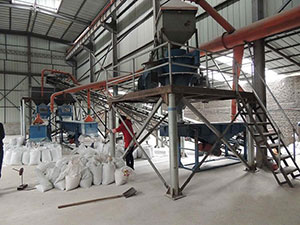
Quartz sand screening site
Materials are classified into 800-200 mesh

Sawdust screening site
To remove impurities from the material

Feed screening site
Separating the residue in the 300 mesh feed

Fly ash screening site
Fly ash is divided into different particle sizes and used in different industries
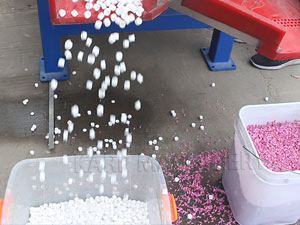
Plastic particle screening site
Plastic granules are screened into different sizes for packaging
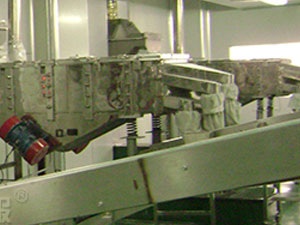
Fertilizer particle screening site
Product packaging after sieving of fertilizer granules

| Screening materials | Specific gravity (kg/m³) |
Mesh size (mm) |
Capacity (kg/h) |
| Cement | 1440 | 1.0 | 1000 |
| Ore | 2500 | 5.0 | 2000 |
| Pellet fertilizer | 800 | 2.0 | 1500 |
| Flour | 600 | 0.5 | 800 |
| Plastic granules | 1200 | 3.0 | 1200 |
| Ceramic powder | 1100 | 0.8 | 900 |
| Calcium carbonate | 900 | 2.5 | 1800 |
| Feed granules | 700 | 1.0 | 1100 |
| Metal powder | 2500 | 0.3 | 500 |
| Silica sand | 1300 | 1.0 | 1400 |
| Carbon black | 1800 | 1.0 | 1200 |
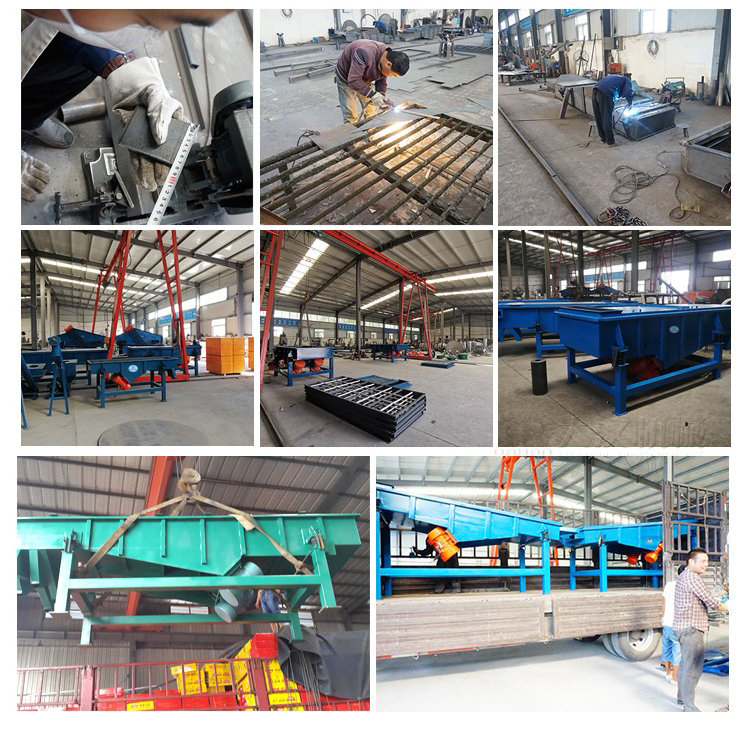
When buying a vibrating screen, you need to pay attention to the following points:
1. Screening requirements: It is necessary to clarify the particle size range and throughput of the materials to be screened in order to select the appropriate model and specification of the vibrating screen.
2. Materials used: Select the screen material according to the characteristics of the material, such as stainless steel, polyurethane or polyethylene.
3. Design parameters: When purchasing, you need to know the design parameters such as the rotating speed, amplitude, and screen surface inclination of the vibrating screen.
4. Brand and quality: choose a vibrating screen of a well-known brand, and the quality is guaranteed. A reliable and durable vibrating screen should be selected to increase service life and reduce maintenance costs.
5. After-sales service: Choose a supplier with a complete after-sales service system in order to obtain timely technical support and maintenance services during use.

The calculation of the vibrating screen needs to consider the following factors: screen area, screening particle size, screening efficiency, etc. Among them, the larger the screen area, the higher the screening efficiency; the finer the screening particle size, the lower the screening efficiency; the screening efficiency is mainly affected by the vibration strength and frequency. According to the operation requirements, select the appropriate vibration system, sieve type and sieve aperture size. At the same time, the physical characteristics of different materials in actual use should also be considered, and different screens and vibration parameters should be selected to achieve the best screening effect. In use, regular maintenance is also required to ensure the normal use and long-term stable operation of the vibrating screen.
Address:China,Yanjin county forest park gate to the west 1000 meters north road.